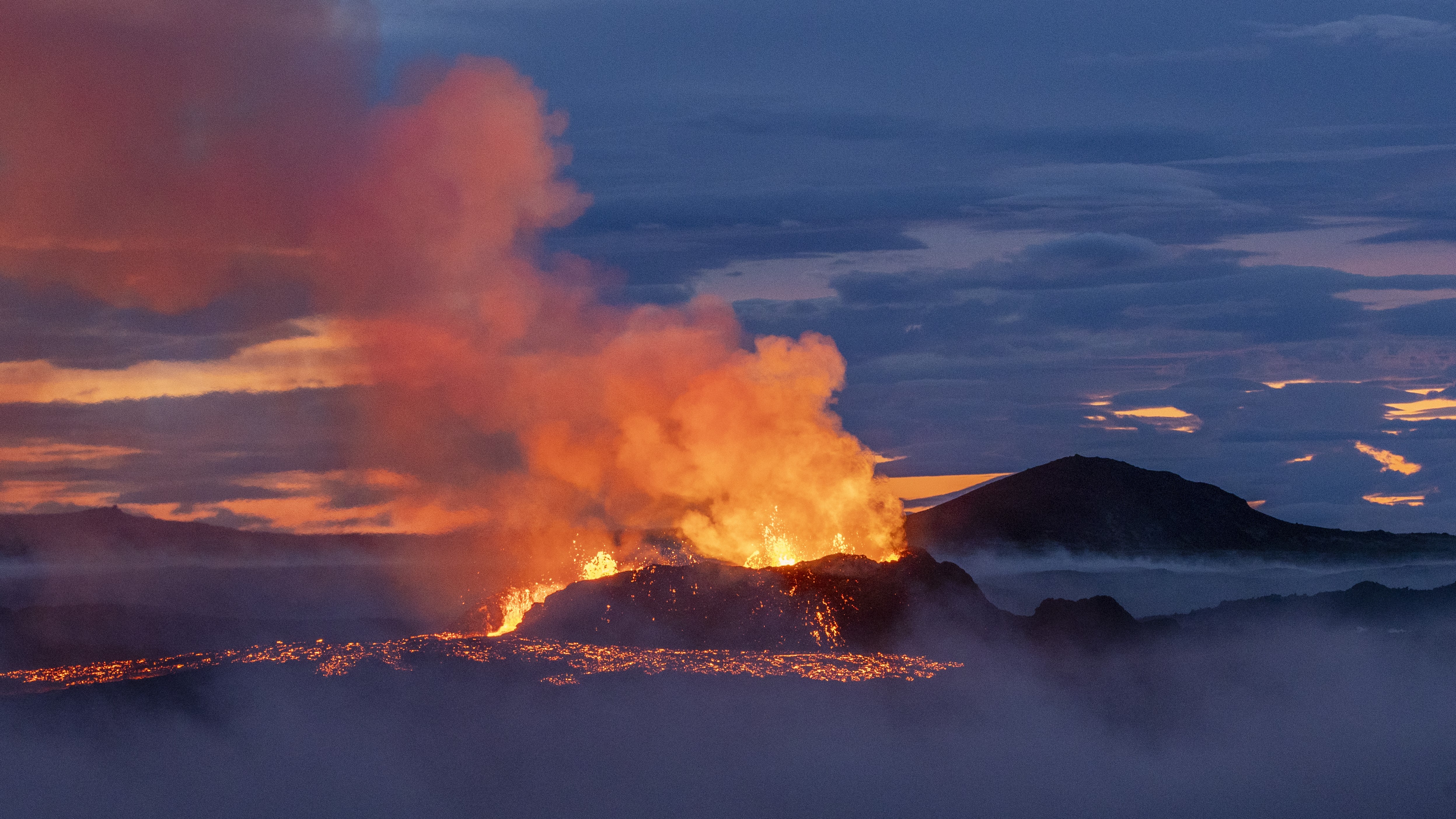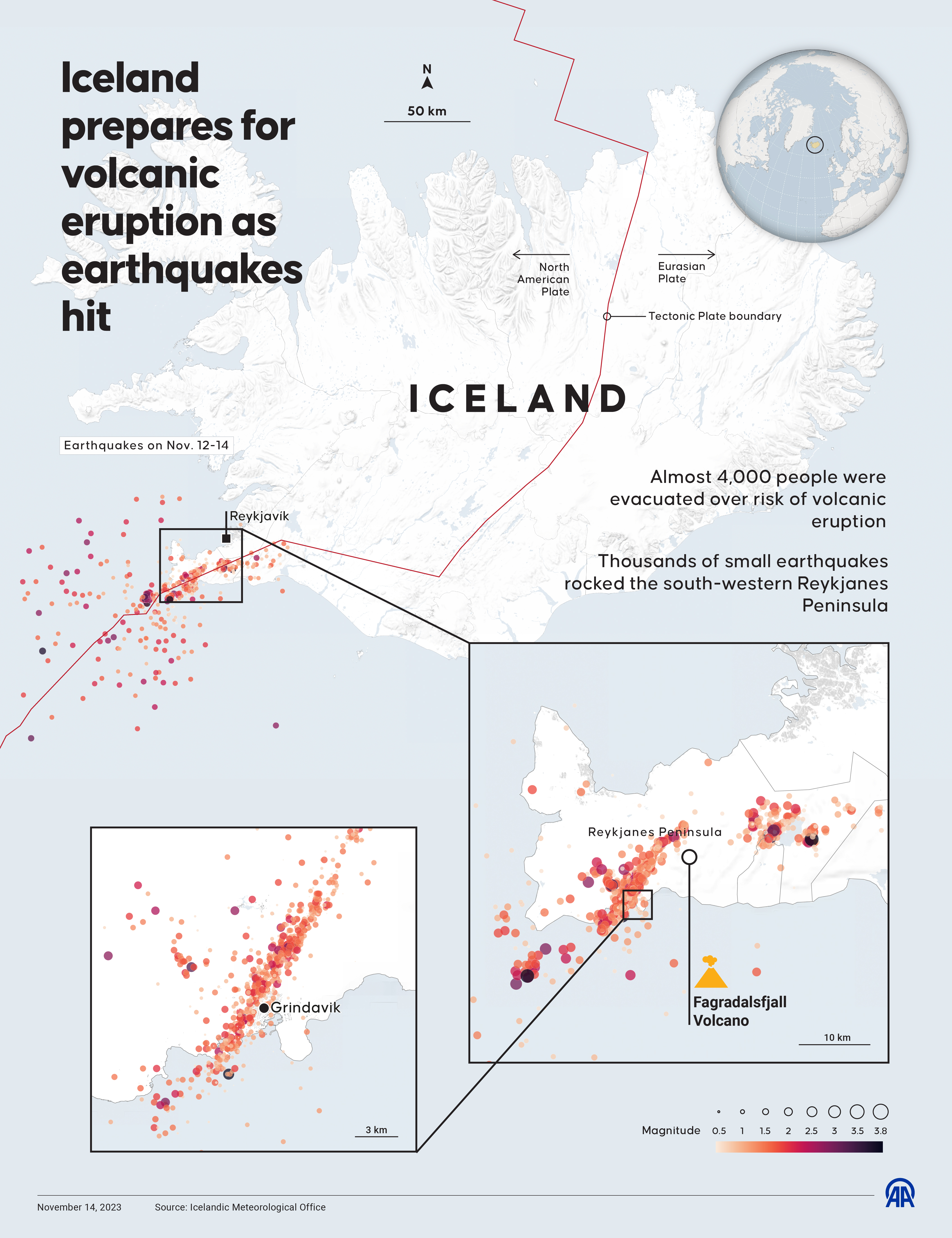
Iceland's potentially imminent eruption in the Reykjanes Peninsula is part of a 1,000-year cycle of volcanic activity that will likely cause eruptions for centuries, scientists say.
"Time's finally up," Edward W. Marshall, a researcher at the University of Iceland's Nordic Volcanological Center, told Live Science in an email. "We can get ready for another few hundred years of eruptions on the Reykjanes."
Seismic activity began increasing in the south of the peninsula in October, with hundreds of earthquakes recorded there each day. On Nov. 10, authorities evacuated the town of Grindavík, with experts warning an volcanic eruption could take place in just days.

According to the Icelandic Met Office (IMO), a magma tunnel stretching 9.3 miles (15 kilometers) formed beneath the ground between Sundhnúkur in the north and Grindavík. The area affected also encompasses the Blue Lagoon geothermal spa — a tourist hotspot that attracts hundreds of thousands of visitors annually.
Related: Underwater volcanic eruption gives birth to new island in the Pacific
Magma in the tunnel — also known as a dike — appears to be rising to the surface, and there is a high risk of it breaking through. The greatest area of magma upwelling is currently close to Sundhnúkur, about 2 miles (3.5 km) northeast of Grindavík, according to the IMO. Researchers believe the amount of magma in the tunnel is "significantly more" than what was present during the eruptions at Fagradalsfjall, which sparked back to life in 2021 after more than 800 years of inactivity.
That 2021 eruption marked the start of a new cycle of volcanic activity on the Reykjanes Peninsula. Geological records show periods of inactivity last between 600 and 1,200 years, which is then followed by pulses of eruptions lasting between 200 and 500 years, Clive Oppenheimer, a professor of volcanology at the University of Cambridge in the U.K., told Live Science in an email.
"It looks like 2021 kicked off a new eruptive phase which might see the several fault zones crossing the [Reykjanes Peninsula] firing on and off for centuries," he said.

The Reykjanes Peninsula sits above two tectonic plates that are being pulled apart. The strain that builds up is released in bursts as part of the cycle. "We are now in one of these pulses," David Pyle, a volcanologist and professor of Earth sciences at the University of Oxford, U.K, told Live Science in an email. "Each eruption releases just a bit more of the stored-up strain, and eventually, when all of that strain has been released, then the eruptions will stop."
It is currently unclear if an eruption will take place as a result of the magma tunnel. "These sorts of dikes are actually a tectonic, not a magmatic feature. In other words, the lava is filling a fracture, not forcing its way into the rock," Marshall said.
Should a fissure emerge, an eruption could last for several weeks. The large amount of magma involved compared with previous eruptions in the region could result in more lava flow at the surface, Oppenheimer said.
What happens next is a waiting game, Marshall said. "I predict — if an eruption occurs — that it will occur between a few days to threeish weeks. If it hasn't erupted in three weeks, I don't think it will happen. Cooling will begin to close the fractures."







